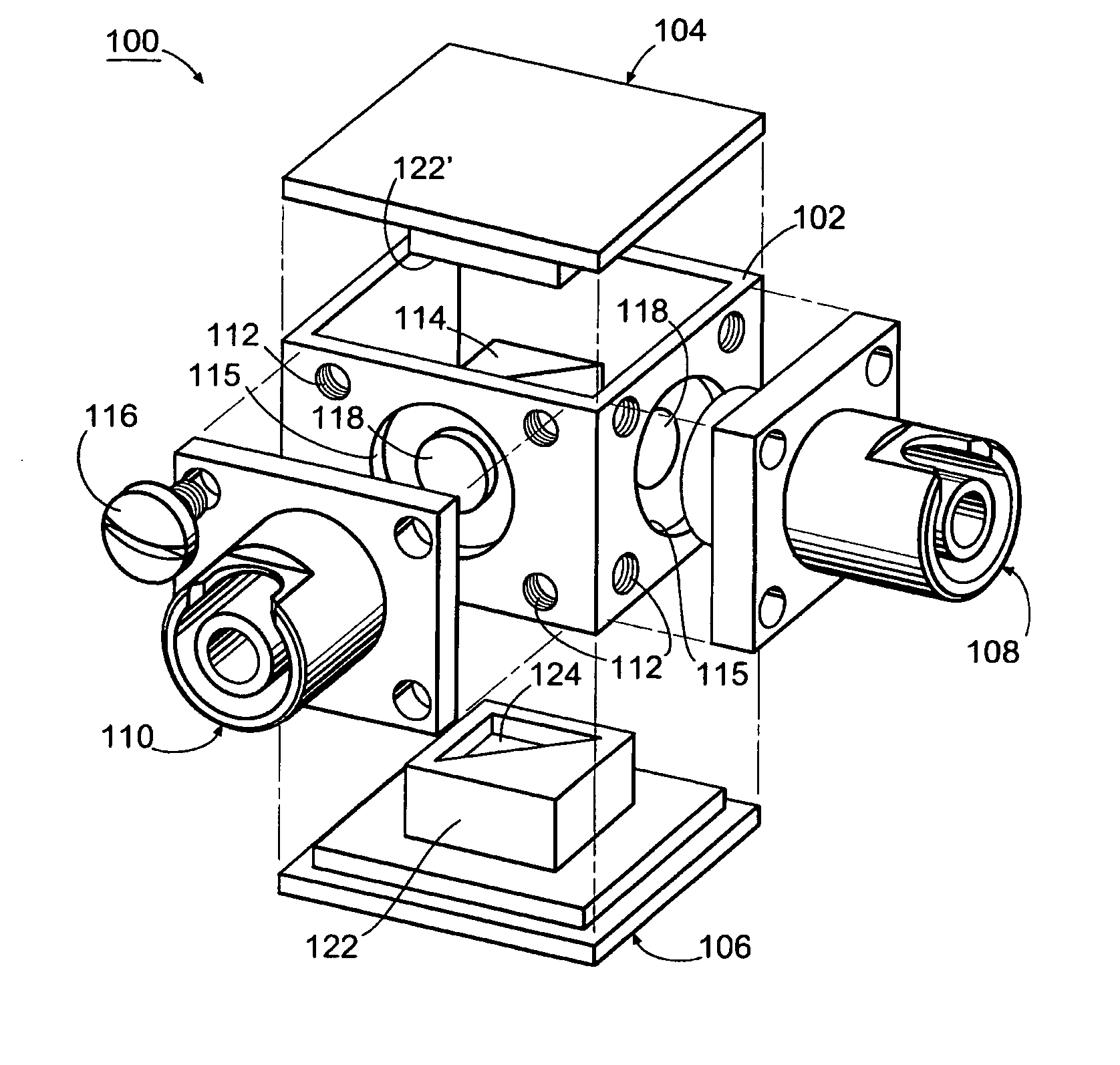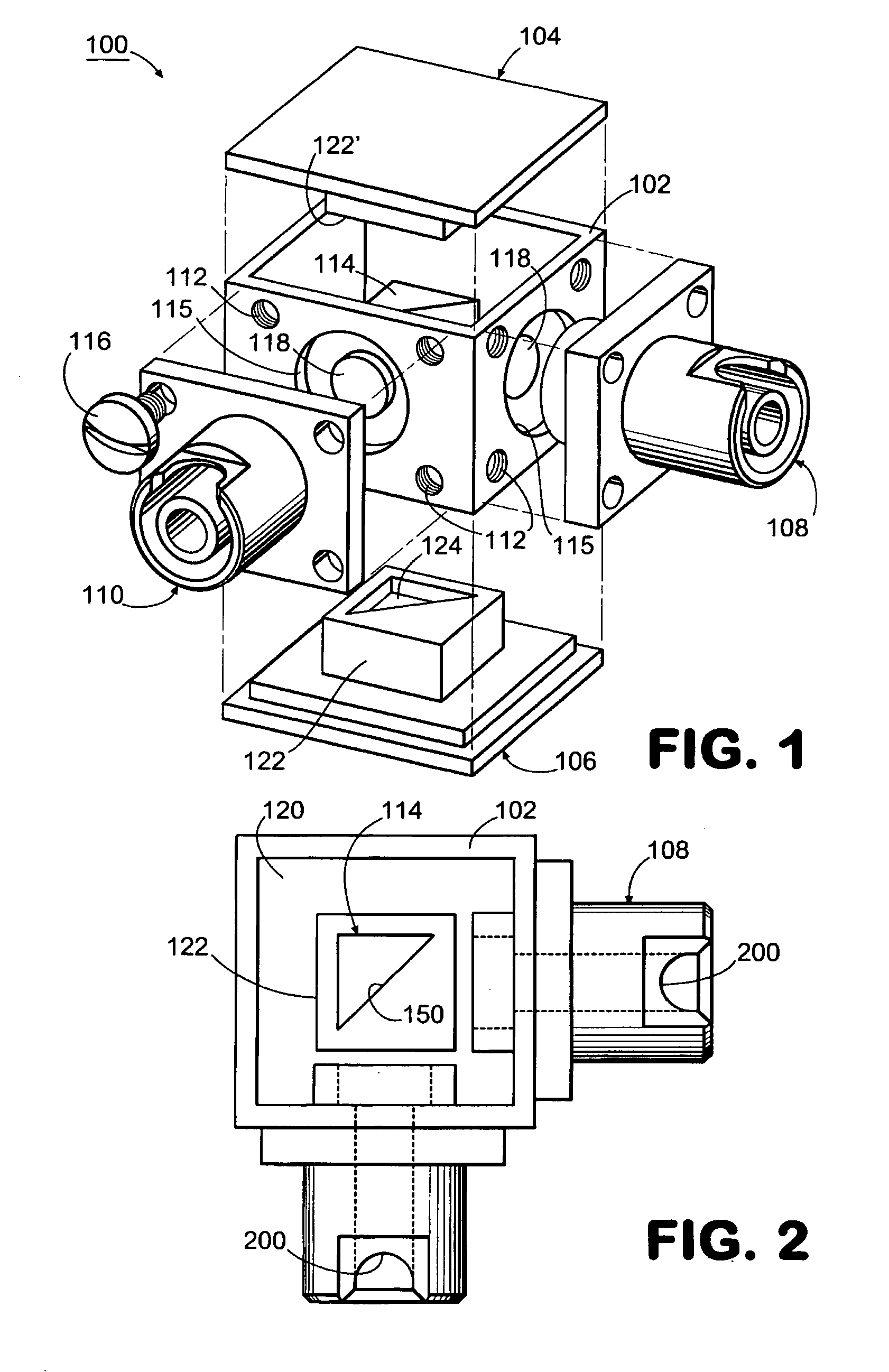System and method for coupling and redirecting optical energy between two optical waveguides oriented at a predetermined angle
a technology of optical waveguides and coupling and redirection, applied in the field of optical structures, can solve the problems of splicing fiber optic cables that can be tedious and time-consuming, and can cause substantial losses in optical power at the splice, so as to maximize the collection and redirection of optical energy, minimize back reflection or other optical return losses, and maximize the effect of optical energy transfer
- Summary
- Abstract
- Description
- Claims
- Application Information
AI Technical Summary
Benefits of technology
Problems solved by technology
Method used
Image
Examples
Embodiment Construction
[0055] Referring now to the drawings, in which like numerals represent like elements throughout the several figures, aspects of the present invention in the illustrative operating environment will be described.
[0056]FIG. 1 is an assembly diagram of an exemplary optical coupler 100 according to the exemplary embodiment of the present invention. The optical coupler 100 can comprise a connector housing 102, a first cover 106, and a second cover 104. The optical coupler 100 may further comprise a first connector 108 and a second connector 110.
[0057] The connector housing 102 can take the form of a cubed-shaped structure. However, other shapes of the connector housing 102 are not beyond the scope of the present invention. For example, the connector housing 102 could take the form of a circular, triangular or rectangular shape. The connector housing 102 can be made from metal. Exemplary metals include, but are not limited to, steel, copper, nickel, or aluminum. The material for the conn...
PUM
 Login to View More
Login to View More Abstract
Description
Claims
Application Information
 Login to View More
Login to View More - R&D
- Intellectual Property
- Life Sciences
- Materials
- Tech Scout
- Unparalleled Data Quality
- Higher Quality Content
- 60% Fewer Hallucinations
Browse by: Latest US Patents, China's latest patents, Technical Efficacy Thesaurus, Application Domain, Technology Topic, Popular Technical Reports.
© 2025 PatSnap. All rights reserved.Legal|Privacy policy|Modern Slavery Act Transparency Statement|Sitemap|About US| Contact US: help@patsnap.com



